This article was co-authored by Candace Hanna. Candace Hanna is a stylist and style expert based in Southern California. With 16 years of experience in the corporate fashion and personal styling realms, she runs Style by Candace, a personal styling agency that focuses on helping individuals find their personal expression through clothing. Her work has been featured in magazines such as Shoutout LA and VoyageLA.
There are 7 references cited in this article, which can be found at the bottom of the page.
This article has been viewed 85,688 times.
A properly coordinated outfit is one of the most important parts of looking professional, presentable, and well-dressed. An expensive suit and a well-tailored shirt can get you places, but a mismatched tie can throw off the whole ensemble and leave you looking sloppy and uncoordinated. With trends in men’s fashion constantly changing and evolving, it can be tricky to know how to coordinate a tie with other clothing. A few foolproof rules of thumb are all you need to look great every time.
Steps
Choosing the Right Size Necktie
-
1Match the tie length according to your height. Having the wrong size necktie will draw it undue attention, creating imbalance between your tie and outfit. The ideal length for a necktie should hang at about the middle of your belt. Taller individuals will likely need a longer tie, while shorter individuals may need a smaller one. To test your tie length, you should:[1]
- Hang the tie around your neck.
- Align both ends in front of you.
- Adjust the thick end of the tie to hang at the middle of your belt.
- Verify the thinner end does not exceed the thicker end excessively.
-
2Evaluate tie thickness. Ties generally come in four different thicknesses: 2 in (5 cm), 2½ in (6.4 cm), 3 in (7.6 cm), and 3¼ - 3½ in (8¼ - 8.9 cm). Thicker neckties will suit thicker framed individuals who have a wider front, while thinner ties will generally suit thinner frames.
- Average sized individuals will most consistently pair well with 3 in (7.6 cm) ties.
- Your tie should never be thicker than 3½ in (8.9 cm).[2]
Advertisement -
3Use a dollar bill to determine width in a pinch. When shopping for ties, you might not be able to tell at a glance whether or not a tie is on the thick or thin side. In this case, you can use a dollar bill to check the width. Hold your tie against the side of your dollar bill with Washington's portrait. If the tie stretches from the left side of the dollar bill to Washington's left eye, the tie is 3 in (7.6 cm) long.[3]
-
4Experiment with narrow ties. Narrow ties differ from thin "skinny" ties in that narrow ties taper to a much lesser extent than 2½-in skinny ties. Narrow ties can come in a wide range of sizes, though are usually on the thinner side.
- These ties can look good with thinner cut and narrow cut shirts.
-
5Avoid ultra-skinny ties for formal events. Ties that are 2 in (5 cm) or thinner are generally considered to be "fashion statement" length. Skinny ties are usually the same thinness for the entire length of the tie.
- Use skinny ties as flashy accents for your outfits when going out.[4]
Choosing the Right Color
-
1Evaluate the contrast between your tie and outfit. Simple, single colored ties create high and low contrast pairings easily. High contrast combinations are between colors more distinct from each other on the color spectrum. As an example, red ties and white shirts form a powerful, high contrast combination. Low contrast combinations are formed by color pairings that are closer on the color spectrum, like a darker green tie and a brown suit.
- Complementary colors are those that are similar on the color spectrum. The color spectrum can be recalled with the acronym Roy G Biv, which stands for:
Red orange yellow Blue indigo violet. - Solid black ties should be saved for formal or black tie events.
- White ties are traditionally reserved for weddings to match the white dress of the bride.
- Complementary colors are those that are similar on the color spectrum. The color spectrum can be recalled with the acronym Roy G Biv, which stands for:
-
2Match colors and contrast with your skin tone. This will create the effect of having an all-tied-together outfit. Light haired and skinned individuals match well with pastel colors and combinations of monochromatic colors. Darker hair and complexions pair well with both high and low contrast tie colors, while those who are dark haired and fairly complected should stick to defined, high contrast combinations.[5]
-
3Look cool with tie hues of blue. Mellow greens can also give a refreshing, healthy appearance. These solid colored ties should have simple, regular patterns, and should be paired with other blue clothing. This tie/suit combination will convey a sophisticated look without drawing too much attention to you.[6]
-
4Get a second opinion, if color blind. Men are more likely to have colorblindness, usually between the colors of red and green, and if you are trying to coordinate an outfit with either of these colors, you might need the help of someone who isn't color blind. As many as 8% of men of European heritage are color blind.[7]
-
5Coordinate your tie with your shirt. A white shirt will show off just about any tie you wear, but colored shirts can be a little more complicated. Shirts that are a single color without any pattern can be coordinated in most cases according to the following color scheme:
- Blue shirt: burgundy, gold, navy, red, and yellow ties
- Pink shirt: burgundy and navy ties
- Tan shirts: brown, deep green ties[8]
-
6Compliment your jacket and shirt with your tie. If you plan on wearing a blazer, the primary color of your tie should compliment the color of your jacket. Ties that have accent colors the same as or complimentary to your shirt will integrate all elements of your look into one, stylish outfit.
Choosing the Right Pattern
-
1Match large checked patterns with smaller checked patterns. You can create a trendy, stacked effect by using larger checked patterns in your tie and smaller checked patterns in your shirt. Coordinate this look with pants of a similar color scheme and you'll have a look that'll impress.[9]
-
2Distinguish tie and shirt patters with weight. When your patterns start blending, your look can become muddied and lack definition. Patterns that are similar, like stripes, can be made distinct by using a heavy, thicker pattern in your tie and a lighter, thinner pattern in your shirt.[10]
-
3Break up the patterns of striped shirts with your tie. Use a similar color scheme between your tie and shirt to integrate the two together, and then offset your tie with a unique pattern. This will break up the regularity of the stripes in your shirt, and some tie patterns to consider include:
- Box patterns
- Pin dot patterns
- Polka dot patterns
- Paisley patterns[11]
-
4Avoid certain pattern combos that are prone to clash. There's always an exception, but some styles mesh poorly and should be avoided. Generally, you should avoid patterns that are so similar the shirt and tie blend together, or are difficult to distinguish. Some specific combos to avoid:
- Polka dot shirts and plaid ties
- Madras check shirt and broad-striped tie
- Awning strip shirt and narrow-striped tie
-
5Repeat a color in both patterns. This can cause the two differing patterns to seems connected and intertwined, sometimes creating harmony between even drastically different patterns. This works especially well with high contrast base tie colors, with matching accents, like a pink tie with tiny, patterned brown accents worn with a brown shirt.[12]
Expert Q&A
-
QuestionWhat should your tie match?
 Candace HannaCandace Hanna is a stylist and style expert based in Southern California. With 16 years of experience in the corporate fashion and personal styling realms, she runs Style by Candace, a personal styling agency that focuses on helping individuals find their personal expression through clothing. Her work has been featured in magazines such as Shoutout LA and VoyageLA.
Candace HannaCandace Hanna is a stylist and style expert based in Southern California. With 16 years of experience in the corporate fashion and personal styling realms, she runs Style by Candace, a personal styling agency that focuses on helping individuals find their personal expression through clothing. Her work has been featured in magazines such as Shoutout LA and VoyageLA.
Professional Stylist Your tie should mesh well with your proportions. If you have a slender build, you're the perfect candidate to rock a skinny tie. If you have a heavier upper body, you might be better off choosing a wider tie for proportionality.
Your tie should mesh well with your proportions. If you have a slender build, you're the perfect candidate to rock a skinny tie. If you have a heavier upper body, you might be better off choosing a wider tie for proportionality. -
QuestionDoes a green tie match a white shirt?
 Community AnswerIt does. Most ties match a white shirt. Darker colors work very well, but anything other than pure white will work.
Community AnswerIt does. Most ties match a white shirt. Darker colors work very well, but anything other than pure white will work. -
QuestionWhat color tie would match with navy blue pants and a light blue shirt?
 HumanBeingTop AnswererA plain navy tie would be fine, if a bit boring. Look for a patterned tie, such as paisley, that incorporates light and dark blue and other colors. Black, brown and green are the only colors that "conventionally" don't match navy.
HumanBeingTop AnswererA plain navy tie would be fine, if a bit boring. Look for a patterned tie, such as paisley, that incorporates light and dark blue and other colors. Black, brown and green are the only colors that "conventionally" don't match navy.
References
- ↑ http://www.thefineyounggentleman.com/style-advice/correct-tie-length/
- ↑ https://www.thetiebar.com/tie-size-guide
- ↑ http://www.artofmanliness.com/2011/04/26/match-tie-with-shirt-suit/
- ↑ https://www.thetiebar.com/tie-size-guide
- ↑ http://www.artofmanliness.com/2011/04/26/match-tie-with-shirt-suit/
- ↑ http://www.artofmanliness.com/2011/04/26/match-tie-with-shirt-suit/
- ↑ https://nei.nih.gov/health/color_blindness/facts_about
- ↑ http://www.necktieaficionado.com/How-To-Match.html
- ↑ http://www.askmen.com/fashion/fashiontip_250/297_fashion_advice.html
About This Article
To match a tie with your shirt, try pairing a blue shirt with a navy, red, or yellow tie, or a pink shirt with a burgundy or navy tie. Alternatively, choose a tie in a color that complements your hair and skin tone. For example, if you have light hair and light skin, pick a pastel tie, or choose a red tie against a white shirt if you have dark hair and dark skin. You can also look sharp by putting patterns together, such as a large-checked tie with a small-checked shirt in a similar color, or a thickly-striped tie with a thinly-striped shirt. For tips on how to choose a tie that’s the perfect length and a stylish width, keep reading!
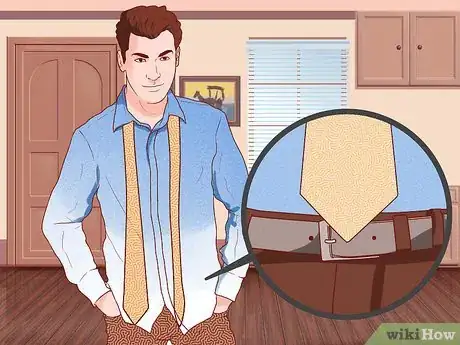
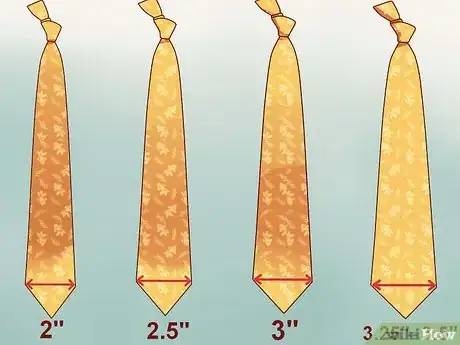
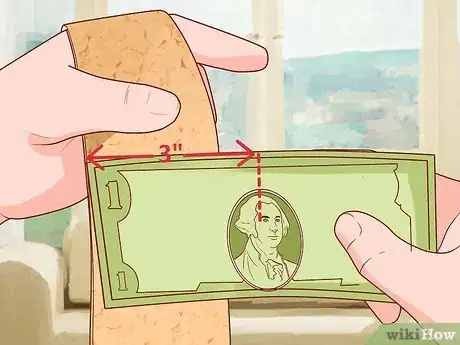




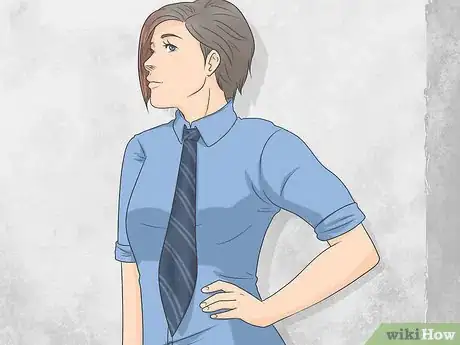






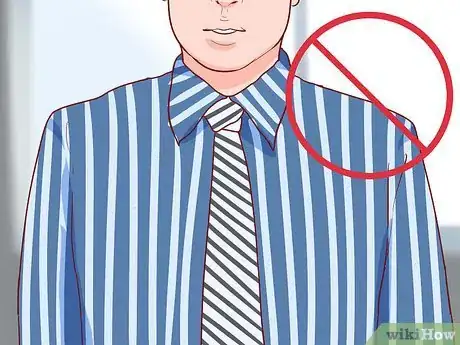

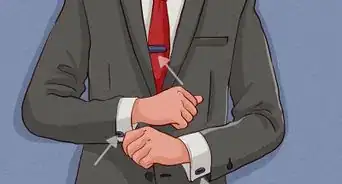
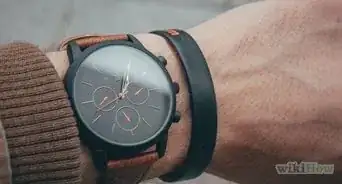
-Step-16.webp)
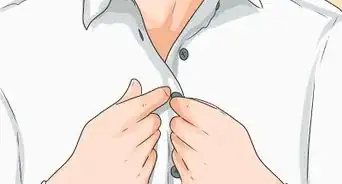
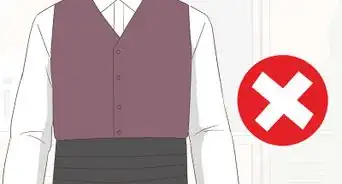
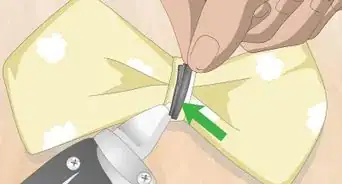

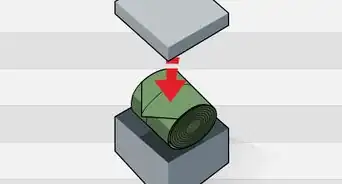










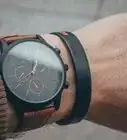
-Step-16.webp)


































